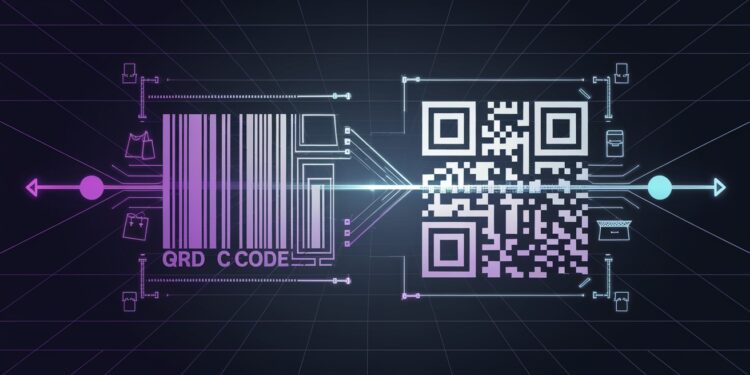In the ever-evolving world of retail, a seismic shift is on the horizon. The familiar black and white stripes of the barcode, a stalwart of the industry for half a century, may soon be replaced by the more versatile and data-rich QR code. According to GS1, the global organization that maintains barcode standards, this transition could be complete by the end of 2027, ushering in a new era of efficiency and consumer empowerment.
The Barcode’s Storied History
To appreciate the significance of this change, it’s worth looking back at the barcode’s humble beginnings. The first barcode was scanned in June 1974 at an Ohio supermarket, where it adorned a pack of Juicy Fruit chewing gum. This groundbreaking technology, devised by inventor Joe Woodland at the behest of a retailer seeking to speed up checkouts and improve inventory management, would go on to revolutionize the industry.
Over the decades, the barcode became ubiquitous, a symbol of the modern retail experience. Its simple yet effective design allowed for quick scanning and accurate product identification, streamlining operations and reducing human error. However, as technology advanced and consumer demands evolved, the limitations of the barcode became increasingly apparent.
The Rise of the QR Code
Enter the QR code, a more sophisticated cousin of the barcode. These square, pixelated codes can store far more information than their striped predecessors, opening up a world of possibilities for retailers and consumers alike. QR codes can embed data such as:
- Expiration dates, enabling dynamic pricing and waste reduction
- Product instructions and ingredients, empowering informed consumer choices
- Allergen information, ensuring customer safety and satisfaction
The potential applications are vast and transformative. Coca-Cola, for example, has already employed QR codes in Latin America to track refillable bottles, capping the number of refills at 25 before mandating recycling. Meanwhile, Australian supermarket chain Woolworths reports reducing food waste by up to 40% in some areas by leveraging the codes for more targeted discounting of soon-to-expire products.
The Global Transition
GS1’s ambitious goal of worldwide QR code adoption by retailers by the end of 2027 is not without its challenges. Renaud de Barbuat, President and CEO of GS1, acknowledges that this transition will require investment from retailers to upgrade their point-of-sale systems. However, he remains confident, stating:
We think it’s doable … It represents some investment on the part of retailers to adapt their point of sale systems, but it’s already well under way.
– Renaud de Barbuat, President and CEO of GS1
In the UK, nearly half of retailers have already made the necessary upgrades, with the majority of the remainder expected to follow suit over the coming year. The COVID-19 pandemic, which familiarized consumers with QR codes for contactless menus and check-ins, has inadvertently accelerated this process.
Challenges and Opportunities
While the benefits of QR codes are numerous, the transition is not without its hurdles. Some experts argue that the need for the new codes is less pressing for non-perishable goods, and that the cost of redesigning packaging may deter some retailers. There are also concerns about the increased demand on cloud computing resources to store the additional data, potentially leading to a larger carbon footprint.
However, proponents of the change emphasize the long-term advantages. QR codes can withstand minor damage and crumpling, unlike barcodes which can become unreadable with the slightest imperfection. They also offer exciting opportunities for consumer engagement, such as instant access to product reviews, sustainable disposal instructions, and even augmented reality experiences.
Embracing the Future
As the retail industry stands on the precipice of this monumental shift, it’s clear that the benefits of QR codes far outweigh the challenges. By embracing this technology, retailers can streamline operations, reduce waste, empower consumers, and unlock new avenues for innovation and growth. The barcode’s reign may be coming to an end, but its legacy will live on in the more advanced, adaptable, and customer-centric world of the QR code.
As Anne Godfrey, CEO of GS1 UK, aptly put it:
This has been in the works for some time, but Covid really accelerated it. During the pandemic, everyone got used to pointing their phones at QR codes in pubs and restaurants to access the menu.
– Anne Godfrey, CEO of GS1 UK
The future of retail is indeed coded in squares, not stripes. As the industry embarks on this exciting journey, it’s clear that those who embrace the power of the QR code will be best positioned to thrive in the increasingly digital, data-driven, and customer-focused landscape ahead. The end of an era marks the beginning of a new age of retail innovation – one that promises to transform the way we shop, interact with products, and experience the world around us.








